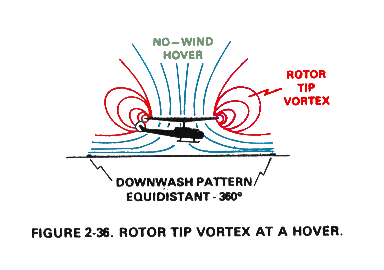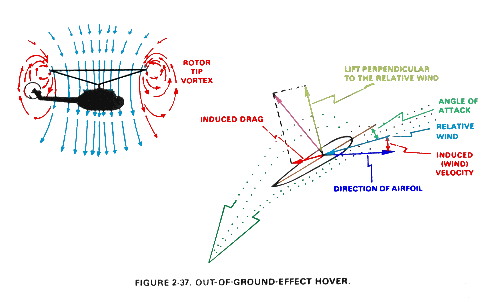
Hovering is actually an element of vertical flight. Assuming a no-wind condition, the tip-path plane of the blades will remain horizontal. If the angle of attack of the blades is increased while their velocity remains constant, additional vertical thrust is obtained. Thus, by upsetting the vertical balance of forces, helicopters can climb or descend vertically.

During hover, the rotor blades move large volumes of air in a downward direction. This pumping process uses lots of horsepower and accelerates the air to relatively high velocities. Air velocity under the helicopter may reach 60 to 100 knots, depending on the size of the rotor and the gross weight of the helicopter. The air flow pattern of a hovering helicopter is illustrated here:

Note how the downwash (induced flow) of air has introduced another element into the relative wind which alters the angle of attack of the airfoil. When there is no induced flow, the relative wind is opposite and parallel to the flightpath of the airfoil. In the hovering case, the downward airflow alters the relative wind and changes the angle of attack so less aerodynamic force is produced. This condition requires the pilot to increase collective pitch to produce enough aerodynamic force to sustain a hover. Although this does increase the lift, it also increases the induced drag, and so total power required is higher.